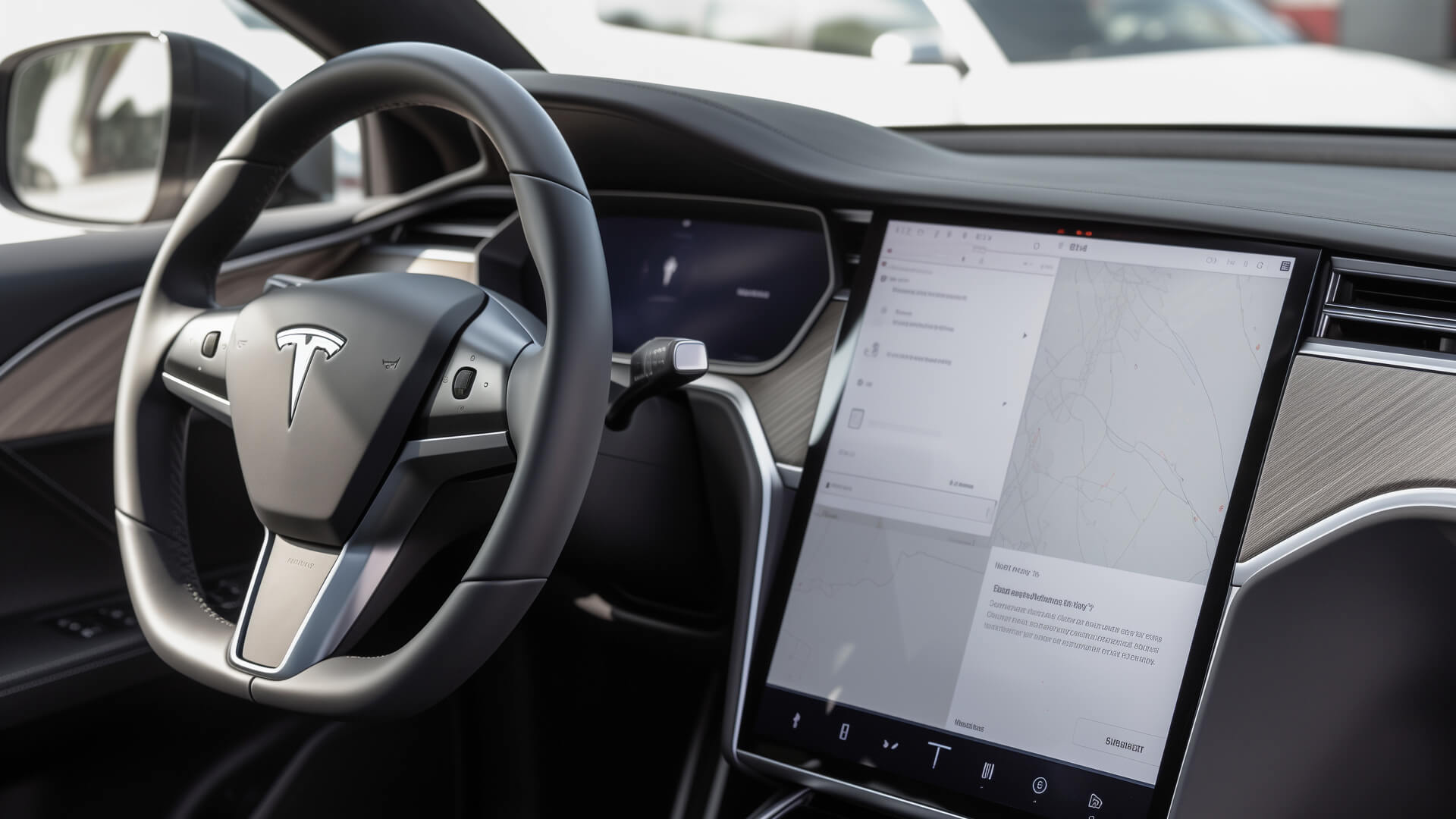
Tesla’s Full Self-Driving (FSD) system aims to deliver a fully autonomous driving experience using a vision-based AI approach. Unlike other autonomous vehicle developers who rely on expensive LiDAR systems, Tesla uses a camera-heavy sensor suite combined with radar and ultrasonic sensors. The system is powered by deep neural networks that interpret the world around the car in real time, allowing it to make driving decisions without human intervention.
FSD’s functionality is modular, with each feature adding to the vehicle’s ability to handle complex driving scenarios. Key features include Autopilot (basic driver assistance), Navigate on Autopilot (highway navigation with lane changes), Traffic Light and Stop Sign Control, Summon (remote vehicle retrieval), and Autosteer. With FSD Beta, Tesla vehicles can navigate city streets, stop for traffic signals, and execute turns without driver input, although drivers must remain attentive.
The long-term vision for FSD is Level 5 autonomy, where no human intervention is required. While Tesla’s FSD is currently in Level 2 autonomy, it’s designed to transition into higher levels of autonomy as the software improves. Tesla has been gathering billions of miles of data from its global fleet, which feeds into its deep learning models, enhancing FSD’s decision-making capabilities.
Key Features:
- Autosteer: Keeps the car centered in its lane, including on highways.
- Navigate on Autopilot: Enables automatic navigation on highways, including lane changes and highway interchanges.
- Traffic Light and Stop Sign Control: Identifies and responds to traffic lights and stop signs in urban environments.
- Autonomous Lane Changes: Automatically changes lanes based on traffic conditions or navigation.
- Summon and Smart Summon: Allows the vehicle to autonomously park or exit a parking spot and come to the driver in a parking lot.
Technologies and Methods:
- Vision-Based System: FSD uses eight cameras to generate a 360-degree view around the vehicle, allowing it to detect objects and environments in real time.
- Neural Networks: The FSD system is powered by Tesla’s proprietary neural networks trained on real-world driving data, allowing it to handle complex driving tasks.
- Over-the-Air Updates: Tesla can roll out updates that improve the FSD system remotely, without the need for in-person maintenance.
Impact and Applications:
- Future of Autonomous Driving: Tesla FSD is shaping the future of autonomous driving by focusing on a scalable, vision-based approach. It aims to make fully self-driving cars accessible to the general public.
- Data-Driven Development: With over 2 billion miles of data collected from its global fleet, Tesla uses this massive dataset to continually improve FSD’s decision-making abilities. This data-driven approach accelerates development while keeping costs lower than LiDAR-based systems.
- Potential for a Robotaxi Network: Tesla envisions that once FSD reaches full autonomy, its vehicles can operate as robotaxis, providing a new revenue stream for Tesla owners and revolutionizing transportation through shared autonomous fleets.
- Safety and Efficiency: Tesla’s approach to autonomous driving has the potential to greatly reduce traffic accidents, which are predominantly caused by human error. Tesla FSD’s AI-driven decision-making process aims to make driving safer and more efficient by avoiding common human mistakes.
Key Use Cases:
- Autonomous Urban Navigation: FSD Beta enables Tesla vehicles to navigate city streets, stop for traffic lights, and execute complex turns without driver input.
- Long-Distance Highway Driving: FSD’s Navigate on Autopilot feature provides autonomous highway driving, making long-distance trips more convenient and reducing driver fatigue.
- Smart Summon: In parking lots, drivers can use the Smart Summon feature to have their Tesla navigate to them autonomously.
Expected Outcomes:
- Full Autonomy (Level 5): Tesla’s ultimate goal for FSD is to achieve full autonomy, where no human driver is required. While still in Level 2, Tesla continues to make strides toward this milestone with every software update.
- Widespread Adoption: Tesla aims for FSD to become the standard for autonomous driving, integrated into all Tesla vehicles and potentially sold as a service to other manufacturers.
- Robotaxi Network: Once full autonomy is achieved, Tesla plans to deploy a robotaxi network, allowing Tesla owners to rent out their autonomous cars when not in use.
Challenges and Future Directions:
- Regulatory Approval: One of the biggest hurdles for Tesla FSD is gaining regulatory approval for full self-driving capabilities in various markets. Autonomous driving laws vary across regions, and Tesla must prove the safety and reliability of its system.
- Public Perception: Tesla’s FSD has faced criticism due to its incomplete autonomy and instances of accidents involving Tesla vehicles using the Autopilot feature. Improving public trust and perception is crucial for its adoption.
- Technological Limitations: While Tesla’s vision-based system has shown promise, achieving full autonomy in all driving conditions (such as heavy rain, snow, or complex urban environments) remains a significant challenge.
- Safety: Tesla has been continuously improving FSD’s safety, but edge cases—unpredictable and rare driving scenarios—remain challenging. Addressing these edge cases is critical for the safe deployment of fully autonomous vehicles.
Key Milestones:
- 2016: Tesla announces plans to develop Full Self-Driving hardware and software.
- 2020: Tesla rolls out the first FSD Beta to a select group of drivers for real-world testing.
- 2021-2024: Continuous expansion of FSD Beta, with updates improving urban navigation and more complex driving maneuvers.

